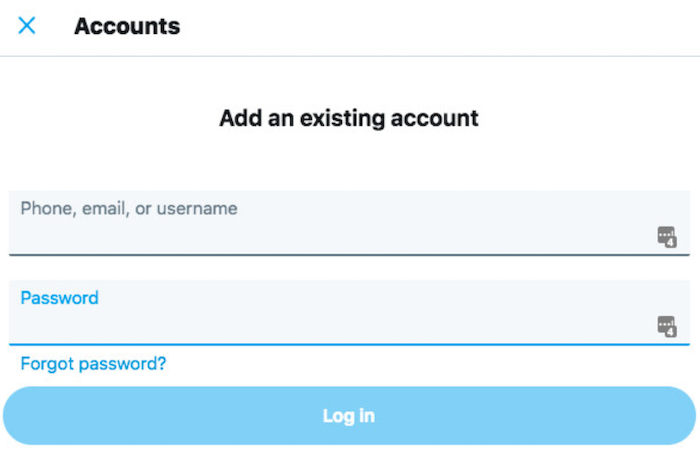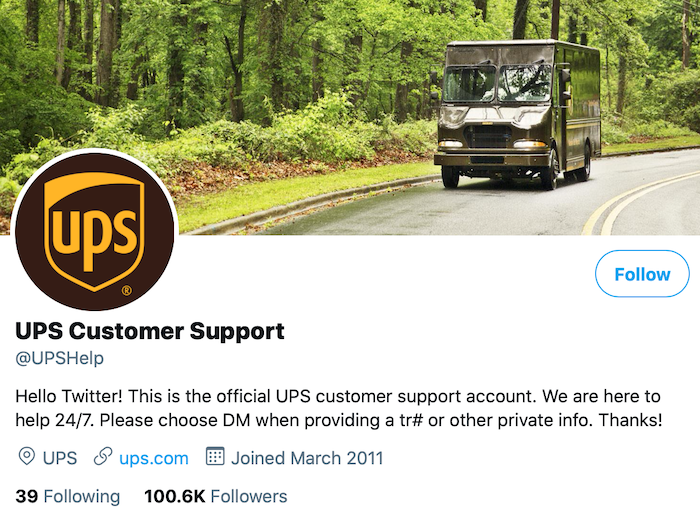
If you’ve ever juggled multiple Twitter accounts, you know how challenging it can be. Not only do you need to engage your followers by producing targeted, valuable content, you also need to keep your brand message consistent across all accounts.
Sounds a little overwhelming, right?
It can be, which is why it might be worth merging your Twitter accounts instead. By unifying your Twitter presence, you can strengthen your brand story and reach a wider pool of followers across two or more separate accounts.
The problem? As of yet, there’s no official way to “merge” Twitter accounts. However, even if you can’t literally merge your existing accounts into one, you can still run them as a single unit from a marketing perspective.
Below, I’ll show you when it might be worth “merging” Twitter accounts as a marketing strategy to the extent it’s possible, and I’ll talk you through specific circumstances when dual account management is especially critical.
Why Should You Merge Your Twitter Accounts?
There are multiple reasons why merging Twitter accounts or managing them more closely could benefit your business, depending on the situation. Briefly, though, here are the three major benefits to unifying your Twitter profiles.
- Consistency: It’s often easier for marketers to plan, create, and post content for just one Twitter account. This is especially true if you’re also managing profiles across multiple social media platforms.
- Recognizability: Bringing multiple Twitter accounts together can build a stronger, more easily recognizable social media brand than running multiple fragmented accounts.
- Clarity: Rather than confusing your followers with multiple accounts for every individual part of your business, you can bring all aspects of your company under one banner.
Essentially, merging Twitter accounts gives your followers a clearer picture of what your company stands for, and everything you offer. It makes it easier for people to reach you online, which could help you convert followers to customers.
If you’re still unconvinced, though, let me put it another way. With over 192 million daily active users, and roughly 500 million Tweets entering the global feed every day, Twitter is an incredibly active platform.
Without a consistent, recognizable, and solid Twitter strategy, it’s easy to get lost in all that noise. Merging your accounts can help you cut through the noise and set your brand apart from your competitors.
Now we’re clear on how unifying or merging Twitter accounts could benefit your business, let’s look at four occasions when this strategy could help and how to manage your accounts until merging becomes an option.
How to Manage Two Twitter Accounts When a Business Consolidation Occurs
A business consolidation is an exciting time. You’re about to join forces with another business to create a new, stronger company with more potential than ever.
From a social media perspective, though, consolidations can be tricky. Since you’re forming an entirely new company, you need to build hype around the venture while retaining your existing followers across both Twitter accounts.
If you’re trying to merge two companies with different styles, it’s even more challenging.
Maybe you have completely different attitudes to Tweeting and engaging followers, or maybe there’s a big difference in your audience demographics. What’s more, there’s a chance you were actually competitors before, and you’re now trying to unify your followers.
Sounds like a challenge, right? Here’s how you can handle it smoothly.
Merge Twitter Accounts Through Your Dashboard
While you can’t merge Twitter accounts, you can bring them together on your desktop or the Twitter mobile app. Log on to your account, click the “More” button on the right-hand sidebar, and click the little “+” symbol.
Next, click “Create new account” or “Add existing account” to proceed:

The process is similar for the iOS and Android apps.
You can add up to five accounts this way, so it’s a good tip to know about.
Communicate With Your Followers
Twitter’s not ideal for communicating lengthy statements, so pin posts from your website or other social media accounts to explain the situation.
Use the same messages, posted simultaneously, across both Twitter accounts to start building some brand continuity and consistency right away.
Hire Influencers
Do your followers respond well to influencers? Consider hiring a few influencers to spread the word and build hype around your new brand.
You can find influencers through marketplaces, influencer marketing agencies, or by searching for them online.
Use Twitter Ads
If you’re consolidating, you’re not just looking to hold onto existing followers. You’re looking for new customers, too. Consider launching Twitter ads and running them across both accounts.
Are Twitter ads really worth it, though? Absolutely.
For one thing, we’re seeing a 35 percent increase in ad engagement across Twitter, which means there’s an audience out there for your corporate ads. Plus, the average Twitter user enjoys targeted, highly specific content, which means promotional yet informative ads can offer users what they want.
How to Manage Your Twitter Accounts When a Business Acquisition Occurs
When a larger company absorbs a smaller company and takes control of its assets, it’s called an acquisition. While the acquiring company might adjust its branding slightly to reflect the merger, the acquired company ceases to exist.
Unsurprisingly, mergers and acquisitions cause a host of marketing challenges. For one thing, since Twitter accounts can form part of the acquired company’s assets, who determines how they’re managed in the long-term? Also, if you decide to shut the acquired company’s account down, who sets the trajectory?
These are just a few challenges digital marketing teams face when running Twitter accounts during a merger, but here are some tips for moving forward.
Audit Your Twitter Accounts
First, assess both Twitter accounts to identify what you’ve got in common and where the differences lie. For example, maybe you sell similar products, but you Tweet in different styles. Or, maybe you’re both fairly active on Twitter, but your follower counts differ considerably.
Here’s an example. MoonPie has a fun and highly distinctive Twitter voice:

If they merged with a company that Tweeted with less humor, the marketing team would need to find a new voice suitable for both brands.
Use your findings to identify how you move both accounts forward with more unity. If legal issues arise due to the merger, don’t forget to involve your legal teams.
Acclimate Your Audiences
Prepare your followers for the big change by introducing them to the new company and its leaders.
First, post about the upcoming merger regularly to ensure the news reaches as many followers as possible.
Next, do some cross-posting. If you’re the acquired company, this could mean sharing Tweets from the acquiring company’s account, or even Tweeting them. Get some conversations going and engage your audiences.
Finally, make sure you’re around to answer questions. Twitter users generally expect a response within 30 minutes, so if you can’t monitor your DMs or Tweets regularly, send followers to an email contact.
Pin Official Announcements
Get in the habit of pinning key announcements to the top of your Twitter profile. Announcements you might want to pin include a merger notice, any logo or branding changes, and the official merger date.
Yes, mergers are challenging, but they are an opportunity to really push your company forward and establish your brand online.
How to Manage Your Twitter Accounts When You Change Your Business Name
Whether you’re reinventing your brand or expanding into new product or service offerings, a name change can kickstart a bright new future for your business.
However, if you’ve been running your Twitter account(s) effectively, you’ll probably have a growing base of followers who know you by a particular name or handle. They’ll be a little surprised if you suddenly change your Twitter handle or business name without warning!
How do you make the name change and inform your followers effectively? No matter how many accounts you’re running, here’s how to communicate a business name change with minimal fuss.
Change Your Username
Go to your account settings and change your username to the new business name. Before you do this, notify your followers so they know it’s still you.
A username change is a great opportunity to share your brand story and the reasons behind the name change, so consider running ads or other promo materials to inform your audience.
Update Your Bio
Change your Twitter bio(s) to reflect the new name. Since every follower sees your bio when they open your profile, putting your new business name ensures maximum visibility.
You can always pin a Tweet with the details, too.
Contact Your Followers
If you’ve moved to a new account, there’s a chance you’ve lost followers. Maybe they didn’t get the message yet, or they decided to stop following you.
There’s only one way to find out what’s up: contact the followers who haven’t joined you on the new handle. You can identify them using marketing tools like Audiense or Sprout Social. Then, either target them with ads or reach out via email (if you have it) to remind them.
Once you’re sure you’ve reached as many followers as possible, deactivate your old accounts.
How to Manage Your Twitter If Your Business Has Multiple Accounts for Different Departments
Running multiple Twitter accounts for one business can be beneficial. You can reach a wider audience, and you can keep your marketing content separate from, say, your support desk.
From this point of view, segmenting your content across multiple accounts could improve your customer service and the overall user experience.
UPS, for example, has a dedicated support account. It makes sense due to the size of the company and the services they provide:

However, there’s nothing simple about running two or more accounts for the same business—especially if you’re a smaller business.
Although you might aim to improve customer service by setting up a dedicated support account, you could end up confusing your customers! Here are some tips for avoiding common issues.
Check Your Metrics
Where are your followers?
Ideally, they should be hanging out on your main marketing account, so if you have higher follower numbers spread across other accounts, it’s worth investigating why.
Maybe you don’t promote your primary account enough, or it’s not providing your followers with the valuable content they’re finding elsewhere.
Signpost Followers Appropriately
Ensure it’s obvious which account a follower should approach when, for example, they need help or are looking for details on the latest promotion.
If your followers don’t know where to turn, there’s a chance they’ll stop following you or engaging with your Tweets. For clarity, consider pinning the relevant details to the top of each profile.
Use Tools to Merge Twitter Accounts
Merge Twitter accounts across departments with the help of social media tools.
TweetDeck, for example, lets you view multiple Twitter accounts simultaneously. You can schedule Tweets, reply to DMs, and seamlessly move between accounts. For the busy marketer running multiple accounts, TweetDeck is an incredibly useful Twitter tool.
Other tools to consider include Buffer and Hootsuite.
Conclusion
Currently, Twitter does not permit companies to merge Twitter accounts. However, you should still be thinking about ways you can consolidate and build a more recognizable and consistent brand profile online.
Managing two or more Twitter accounts is challenging, but it’s absolutely possible with some forward planning and careful brand management.
If you need any help with your branding, whether you’re managing a name change or trying to merge Twitter accounts to the fullest extent possible, check out my consulting services and learn how we can help.
How do you manage two or more Twitter accounts right now? Do you feel like merging accounts could benefit your business?
from Blog – Neil Patel https://ift.tt/2QWlnGS
via IFTTT
No comments:
Post a Comment